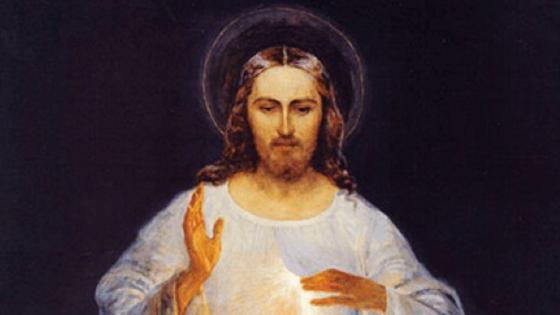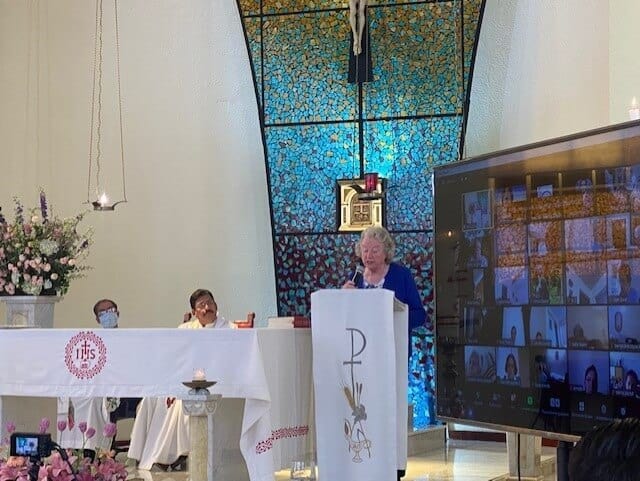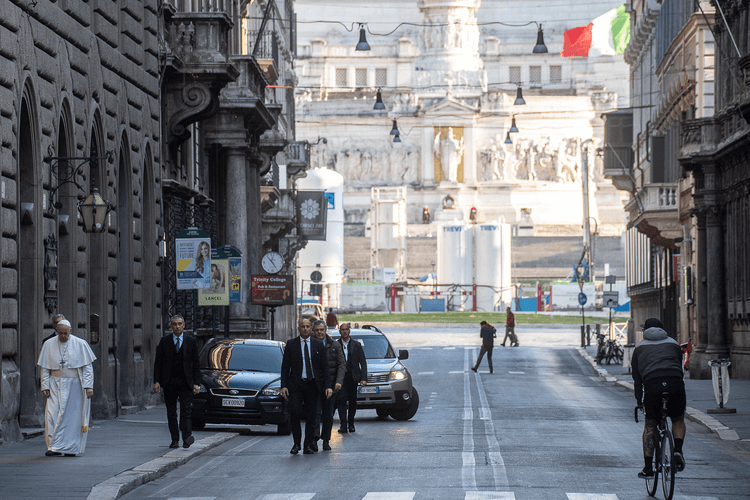During the Mass of Canonization of St. Faustina on April 30, 2000, the year of the Great Jubilee, St. Pope John Paul II proclaimed: “It is important then that we accept the whole message that comes to us from the word of God on this Second Sunday of Easter, which from now on throughout the Church, will be called Divine Mercy Sunday.” The readings on that Sunday are always about mercy, trust and the forgiveness of sins.
By the words “the whole message,” the Holy Father was referring to the strict connection between the “Easter Mystery of the Redemption” — the suffering, death, burial, resurrection, and ascension of Christ, followed by the sending of the Holy Spirit — and this Feast of Divine Mercy, on the Octave Day of Easter. This feast adds so much more meaning to the
Easter celebrations. It was Jesus, Himself who asked for it to be celebrated on this particular Sunday following Easter.
To know how to celebrate the Feast, one must only look at the two decrees that were issued by the Holy See and the words of Our Lord in the diary of St. Faustina, which the Church has accepted, as reliable and worthy of belief. The first decree which established the Feast states that the normal readings for that Sunday are always to be used. They are already perfect as they are and reflect what the Image of Divine Mercy portrays.
The second decree is for the plenary indulgence for Divine Mercy Sunday that was issued on June 29, 2002. This decree also states what the specific duties of Priests are to be, which can be found in the last paragraphs: inform the parishioners, hear confessions, and lead the prayers. The indulgence decree also asks Priests to gently encourage the Faithful to practice works of charity or mercy as often as they can, following the example of Christ.
The words of Our Lord in the diary are very clear, Jesus said, “I want the image to be solemnly blessed on the first Sunday after Easter, and I want it to be venerated publicly so that every soul may know about it. By means of the Image I shall be granting many graces to souls; so let every soul have access to it.”(Diary 341, 570) The Image should be placed in the church so that everyone can see it, perhaps in the sanctuary area and at all the masses on that day so that everyone may venerate and know about it and come to trust in the Lord.
Our Lord also said,”I desire that priests proclaim this great mercy of Mine towards souls of sinners. Tell My priests that hardened sinners will repent on hearing their words when they speak about My unfathomable mercy, about the compassion I have for them in My Heart. To priests who proclaim and extol My mercy, I will give wondrous power; I will anoint their words and touch the hearts of those to whom they will speak.”(Diary, 50, 1521) Easter Sunday is the best time to proclaim God’s mercy.
Because Our Lord said that the feast is to be a “refuge for sinners” it is most important to use the mass media to encourage fallen away Catholics to return to the practice of their faith and seek repentance. The promise of the total forgiveness of sins and punishment is the best motivational tool that we could ever find to get souls to come back to the practice of their faith.
Our Lord Jesus said,”The soul that will go to Confession and receive Holy Communion shall obtain complete forgiveness of sins and punishment. On that day all the divine floodgates through which graces flow are opened. Let no soul fear to draw near to Me, even though its sins be as scarlet…. Mankind will not have peace until it turns to the Fount of My Mercy.” (699) The plenary indulgence that was issued for Divine Mercy Sunday does not change the promises of Our Lord. Rather it provides the Church’s highest mark of approval and endorsement and gives souls more time to go to Confession. Our Lord also said, “The first Sunday after Easter is the Feast of Mercy, but there must also be acts of mercy….I demand from you deeds of mercy, which are to arise out of love for Me.” (Diary, 742) It is clear that Our Lord wants mercy to be shown to others and this can be done by telling everyone about the special promise of the total forgiveness of sins and punishment that He has graciously given to us.
In the Holy Father’s homilies, he often refers to the words of Our Lord that are found in the diary. In his homily on Divine Mercy Sunday in 2001 in Rome he said, “It is the appropriate and incisive answer that God wanted to offer to the questions and expectations of human beings in our time, marked by terrible tragedies. Divine Mercy! This is the Easter gift that the Church receives from the risen Christ and offers to humanity.” He often quotes Our Lord by starting with “Jesus said to St. Faustina.” He spoke of the Image of The Divine Mercy saying “The two rays, according to what Jesus Himself told her, denote blood and water. The blood recalls the sacrifice of Golgotha and the mystery of the Eucharist: the water makes us think of Baptism and the Gift of the Holy Spirit.”
So as we can see, the celebration of Divine Mercy Sunday is quite simple, in fact, outside of having an image of The Divine Mercy in the church to venerate, preaching about Trust and Mercy, and leading the prayers after the Masses for the plenary indulgence, there really isn’t anything else to do on that day itself. It is Jesus Himself that does all the work on that day. Most of the energy should be focused on getting people to come back Church on Divine Mercy Sunday. Jesus will do the rest.
The Chaplet of the Divine Mercy
- Begin with the Sign of the Cross, 1 Our Father, 1 Hail Mary and The Apostles Creed.
- Then on the Our Father Beads say the following:
Eternal Father, I offer You the Body and Blood, Soul and Divinity of Your dearly beloved Son, Our Lord Jesus Christ, in atonement for our sins and those of the whole world.
- On the 10 Hail Mary Beads say the following:
For the sake of His sorrowful Passion, have mercy on us and on the whole world.
(Repeat step 2 and 3 for all five decades).
- Conclude with (three times):
Holy God, Holy Mighty One, Holy Immortal One, have mercy on us and on the whole world.
Jesus said later to Sister Faustina: “Say unceasingly this Chaplet that I have taught you. Whoever will recite it will receive great Mercy at the hour of death. Priests will recommend it to sinners as their last hope of salvation. Even if there were a sinner most hardened, if he were to recite this Chaplet only once, he would receive grace from My Infinite Mercy. I desire that the whole world know My Infinite Mercy. I desire to grant unimaginable graces to those who trust in My Mercy….” (Diary 687)
“….When they say this Chaplet in the presence of the dying, I will stand between My Father and the dying person not as the just judge but as the Merciful Savior”.
Visions of Saint Faustina on Divine Mercy: In 1933, God gave Saint Faustina a striking vision of His Mercy; Sister tells us:
“I saw a great radiance, in the midst of it, God the Father. Between this radiance and the earth I saw Jesus, nailed to the Cross and in such a way that when God wanted to look at the earth, He had to look through the wounds of Jesus. And I understood that it was for the sake of Jesus that God blesses the earth.” (Diary 60)
Of another vision on Sept. 13, 1935, she writes:
“….I saw an Angel, the executor of divine wrath… about to strike the earth…I found myself pleading with God for the world with words heard interiorly. As I was praying in this manner, I saw the Angel’s helplessness; he could not carry out the just punishment….” (Diary 474)
Source: Diary, Saint Maria Faustina Kowalska, Divine Mercy in My Soul (c) 1987 Congregation of Marians of the Immaculate Conception, Stockbridge, MA 01263. All Rights Reserved. Used with permission.
On the header: Original Portrait of ‘Divine Mercy’, as described by St. Faustina to artist: Eugene Kazimirowski, in Vilnius, Poland from January to June 1934.









0 Comments